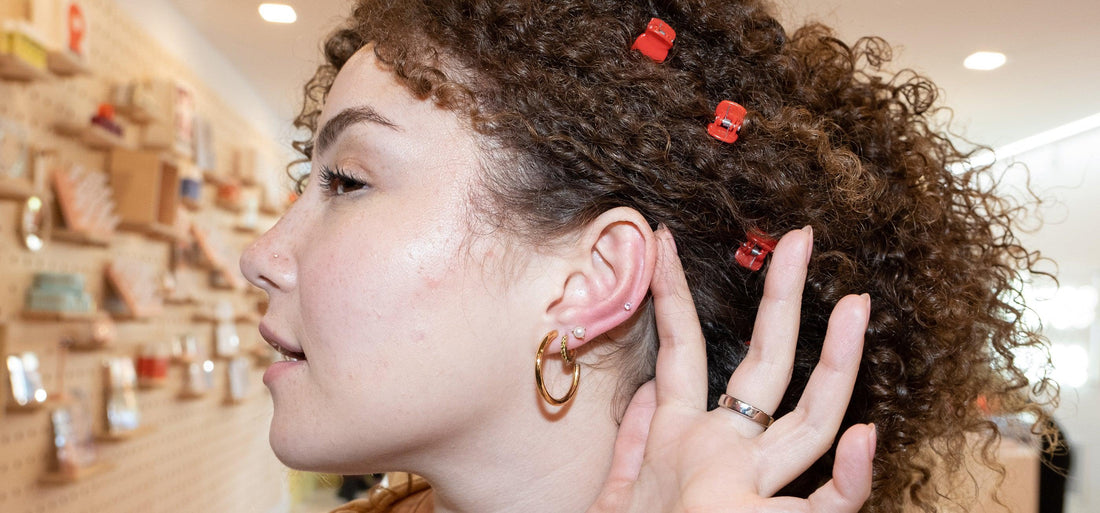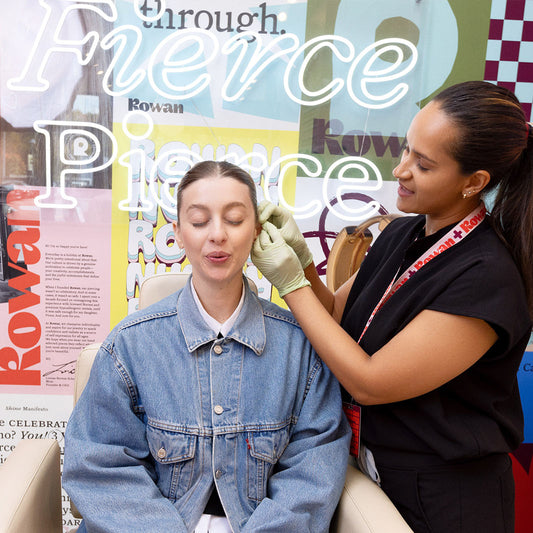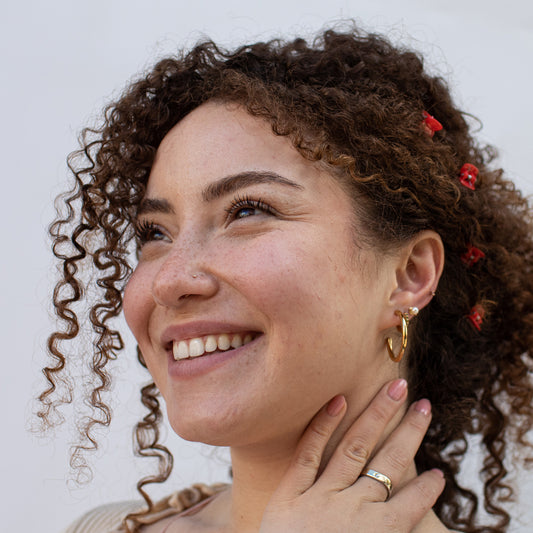Allergic to Earrings? Here’s What You Need to Know
Find Out the Causes, Symptoms, and How to Manage Earring Allergies

Curating your perfect earring stack is a great way to add sparkle to your day. However, not all earrings are created equal. Some jewelry may contain allergens that can cause mild to severe reactions, with nickel being the most common offender. For those with allergies, wearing earrings can cause uncomfortable and even painful reactions. If you're allergic to earrings, it's essential to understand what's causing your reaction and how to manage it. In this article, we'll explore the causes and symptoms of earring allergies and provide tips for managing them.
Causes of Earring Allergies
Earring allergies are usually caused by the metal or materials used in the earrings. Nickel is a common allergen found in many metals, including white gold and sterling silver. Other materials that can cause allergies include copper, brass, and even some plastics.
Symptoms of Earring Allergies
If you're allergic to earrings, you may experience one or more of the following symptoms:
- Redness, itching, and swelling around the earlobe or piercing area.
- Bumps or blisters around the earlobe or piercing area.
- Skin rash or eczema around the earlobe or piercing area.
- Discharge or pus from the piercing.
- Pain or tenderness around the earlobe or piercing area.
If you experience any of these symptoms, it's essential to remove your earrings immediately and seek medical attention if necessary.
Managing Earring Allergies
If you're allergic to earrings, there are several steps you can take to manage your symptoms and prevent future reactions.
- Choose Hypoallergenic Earrings
Hypoallergenic earrings are made of materials that are less likely to cause an allergic reaction. Some examples of hypoallergenic materials include surgical-grade stainless steel, titanium, and 14-karat gold. These materials are less likely to contain nickel and other allergens that can cause a reaction.
- Avoid Nickel-Containing Earrings
If you're allergic to nickel, it's essential to avoid earrings that contain this metal. Instead, look for earrings made of hypoallergenic materials, as mentioned above. Not all jewelry is created equal - for example, white gold can be hypoallergenic and nickel-free, or it can be mixed with nickel. It’s important to do your due diligence before purchasing white gold jewelry to ensure that it does not contain nickel.
- Test Your Earrings
Before wearing new earrings, it's a good idea to test them for allergies. Rub the earrings on the inside of your wrist for a few minutes and check for any redness or irritation. Keep in mind that it can take up to several days to see a reaction occur, making it important to purchase earrings from reputable brands.
- Keep Your Earrings Clean
Keeping your earrings clean can help prevent the buildup of bacteria and other allergens that can cause a reaction. Use a gentle cleanser and a soft cloth to clean your earrings regularly.
- Consult a Dermatologist
If you're experiencing severe or persistent symptoms, it's important to consult a dermatologist. A dermatologist can help determine the cause of your reaction and provide treatment options, such as prescription creams or ointments.
If you have a metallic allergy, it’s essential to understand the cause and symptoms in order to take steps to manage it. Choosing hypoallergenic and nickel-free jewelry can help prevent an allergy from developing, as well as allow you to wear jewelry if an allergy has already been established. With the right approach, you can continue to wear beautiful earrings without discomfort.



